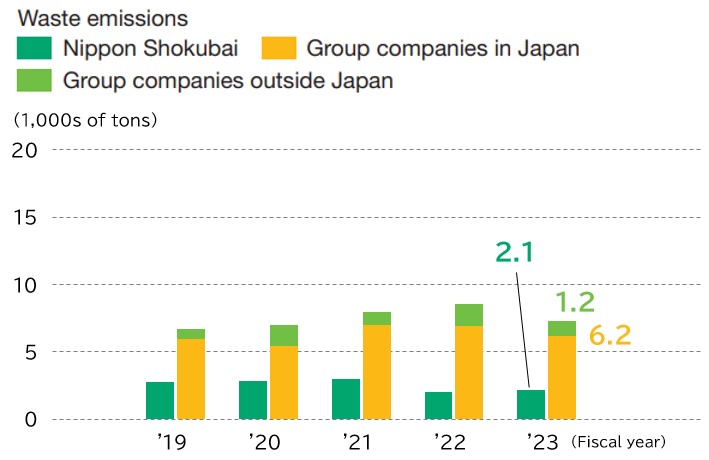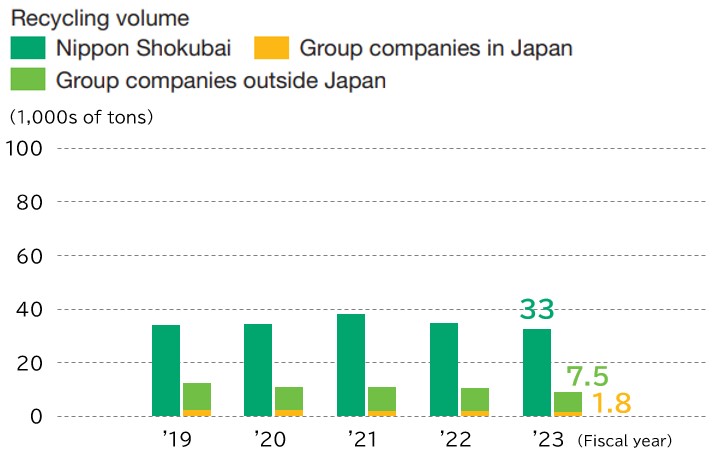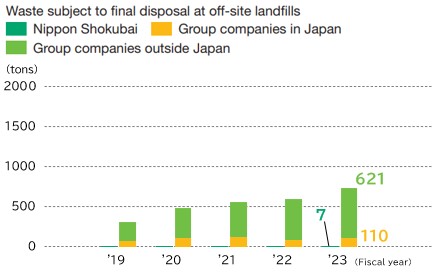Waste Reduction
Reducing the Volume of Waste Sent to Off-site Landfills for Disposal
Promoting waste reduction is vital among efforts to form a sound material-cycle society. Nippon Shokubai sorts, collects, and recycles waste in addition to making other efforts consistent with our goal of achieving and maintaining zero emissions (volume of waste sent to off-site landfills for disposal is 0.1% or less of the total volume of waste).
In FY2023, in addition to continuing to rigorously sort and collect and promote recycling, we reduced the volume of waste sent to off-site landfills for disposal and maintained zero emissions by improving processes such that they produce less waste, reusing by-products, and treating product residues on-site.
Diagram of Waste Treatment

Trends in the Volume of Waste Emissions

Trends in the Volume of Recycling

Trends in the Volume of Waste Sent to Off-site Landfills for Disposal

Employee’s VoiceReducing our environmental impact through material recycling

Fine & Specialty Chemical Production Department, Himeji Plant
The department I belong to manufactures ACRYVIEWA™, an acrylic resin for optical films with excellent transparency, optical properties, and heat resistance. During the manufacturing process, waste resin is generated at the start and end of production, and when product types are changed. Traditionally, waste resin has been handed over to waste disposal companies, and then thermal recycling has been performed by this company, in which the thermal energy generated during incineration is recovered and reused. However, this method is not considered to be recycling, as it does not allow recycling of materials after incineration, and a high disposal cost had been a challenge.
As a result of investigating countermeasures, we discovered the option of material recycling, in which the waste resin is sold to recycling companies as raw material for reused plastic. Although we struggled, not having a precedent for selling waste resin generated during the manufacturing process, we identified the technical, legal, and procedural issues and worked with relevant departments to solve each of these.
In particular, I focused on creating a sorting and managing method. In recycling waste resin, it is important to sort and manage it by color tone, as this determines its use and purchase price. After examining a sorting system that takes into consideration the increased workload on workers to continuously implement recycling, I was able to establish a method that maximizes profits and is understood by my colleagues.
In FY2023, through material recycling, we were able to reuse over 99% of the waste resin generated in the manufacture of ACRYVIEWA™, reducing our environmental impact.